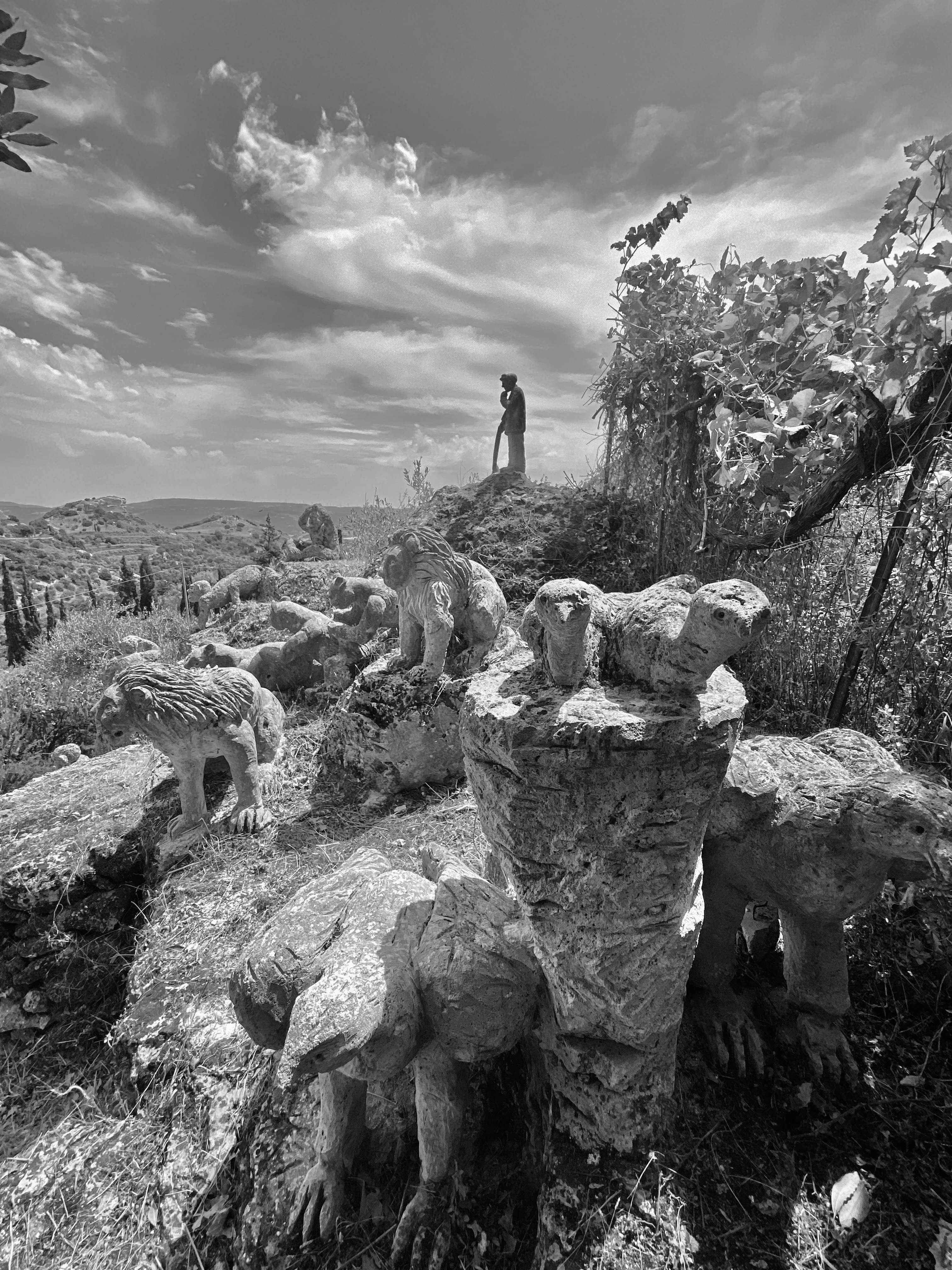La Costante Resistenziale. A guide-tour of Sardinian archaic, weird and marvelous stone sculpture
Ruins of San Nicola di Silanis - zona rio Silanis, Sedini (SS)
Giardino incantato by Paolino Sanna - via Giardino Sanna, Sedini (SS)
8 August 2021
De Rebus Sardois is glad to present A guide-tour of Sardinian archaic, weird and marvelous stone sculpture, an exhibition project resulting from the long-term artistic research by Montecristo Project (Enrico Piras, Alessandro Sau).
This research started in 2018 in the wake of the La Costante Resistenziale program of the Man Museum in Nuoro and it is proposed by Piras and Sau as its critical analysis. According to archaeologist Giovanni Lilliu, who invented the “constance of resistance”, Sardinian people would be able to “resist” unchanged to centuries of colonization, maintaining its identity intact despite the foreign historical-cultural influences.
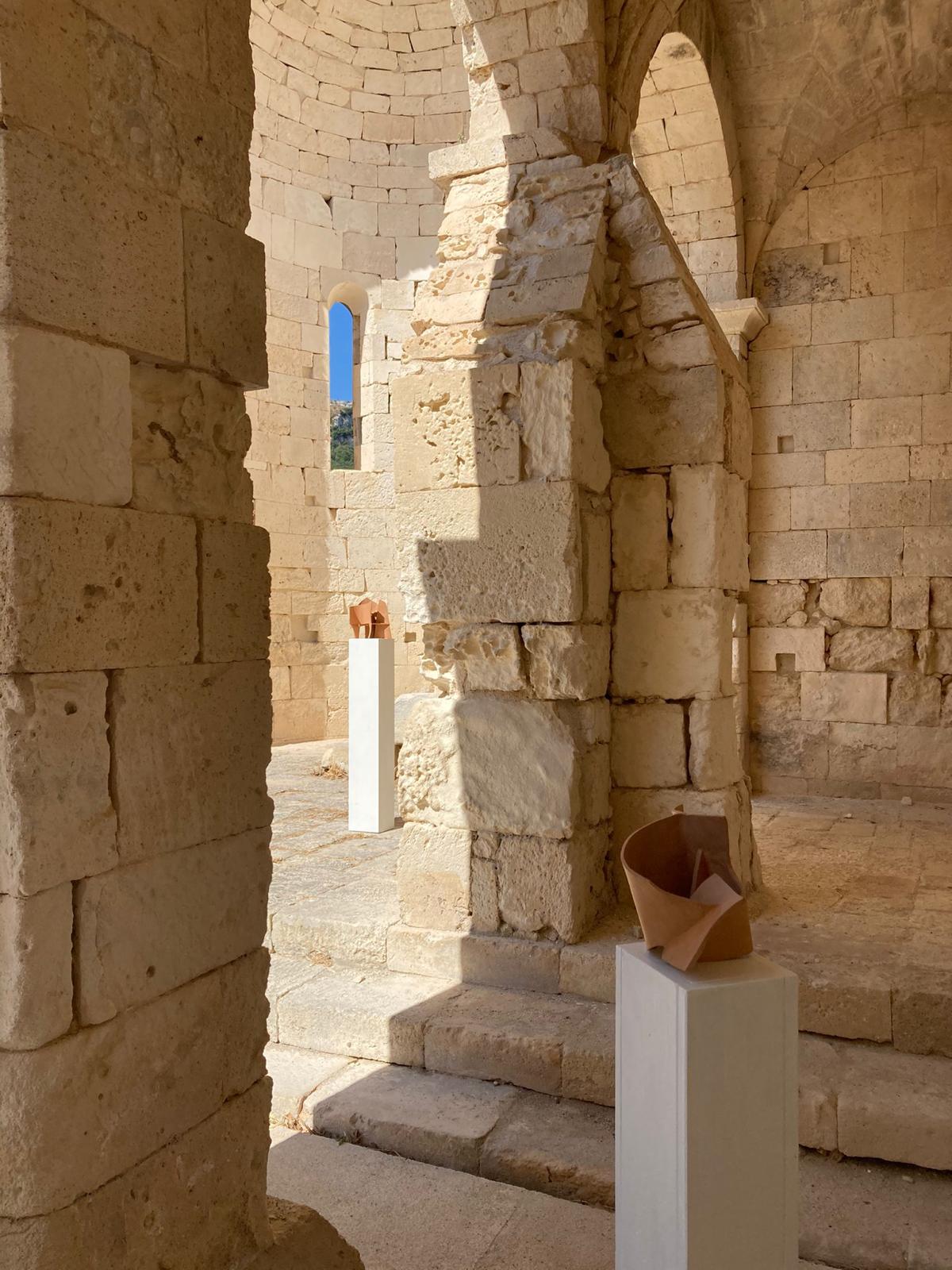
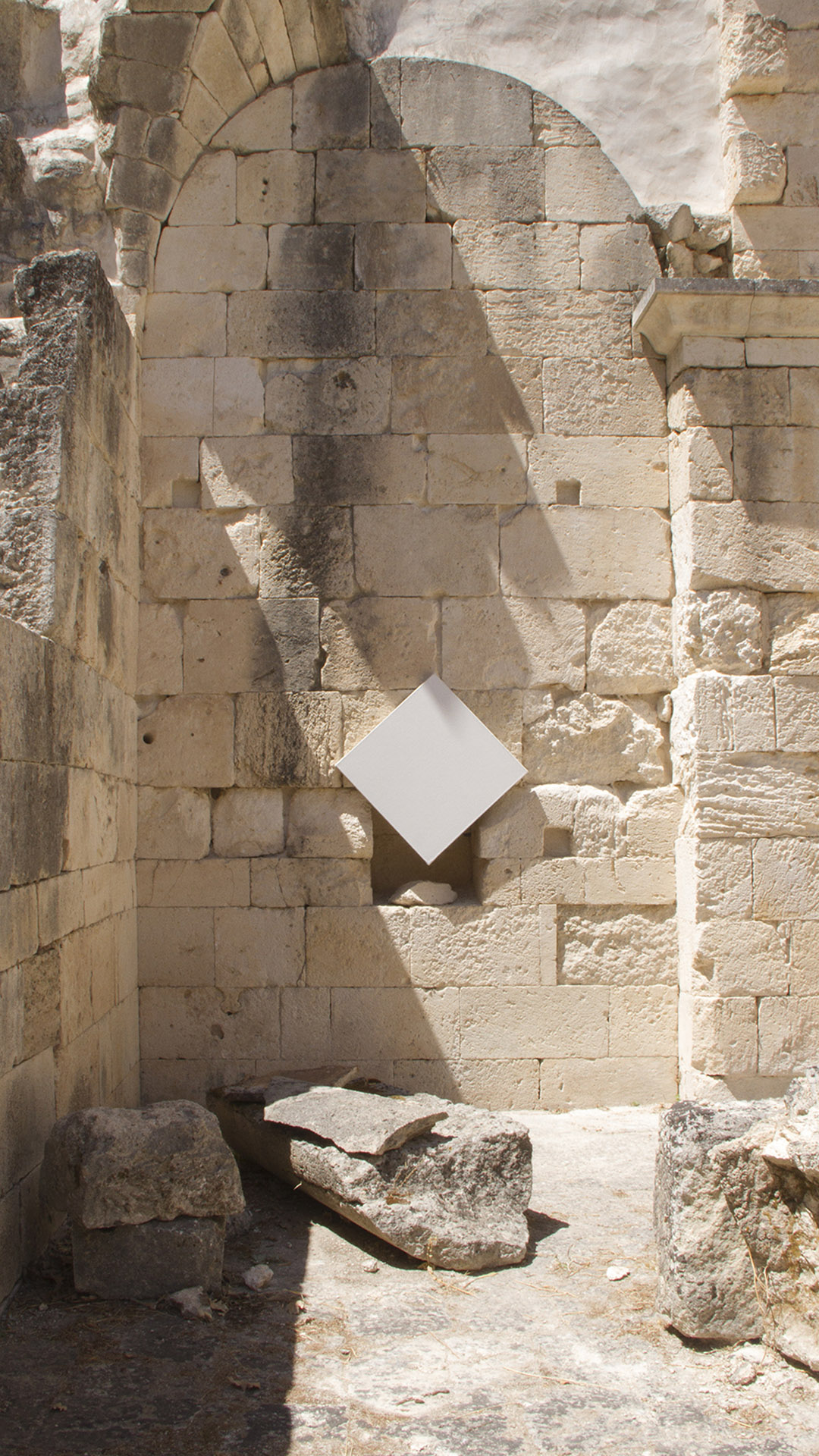
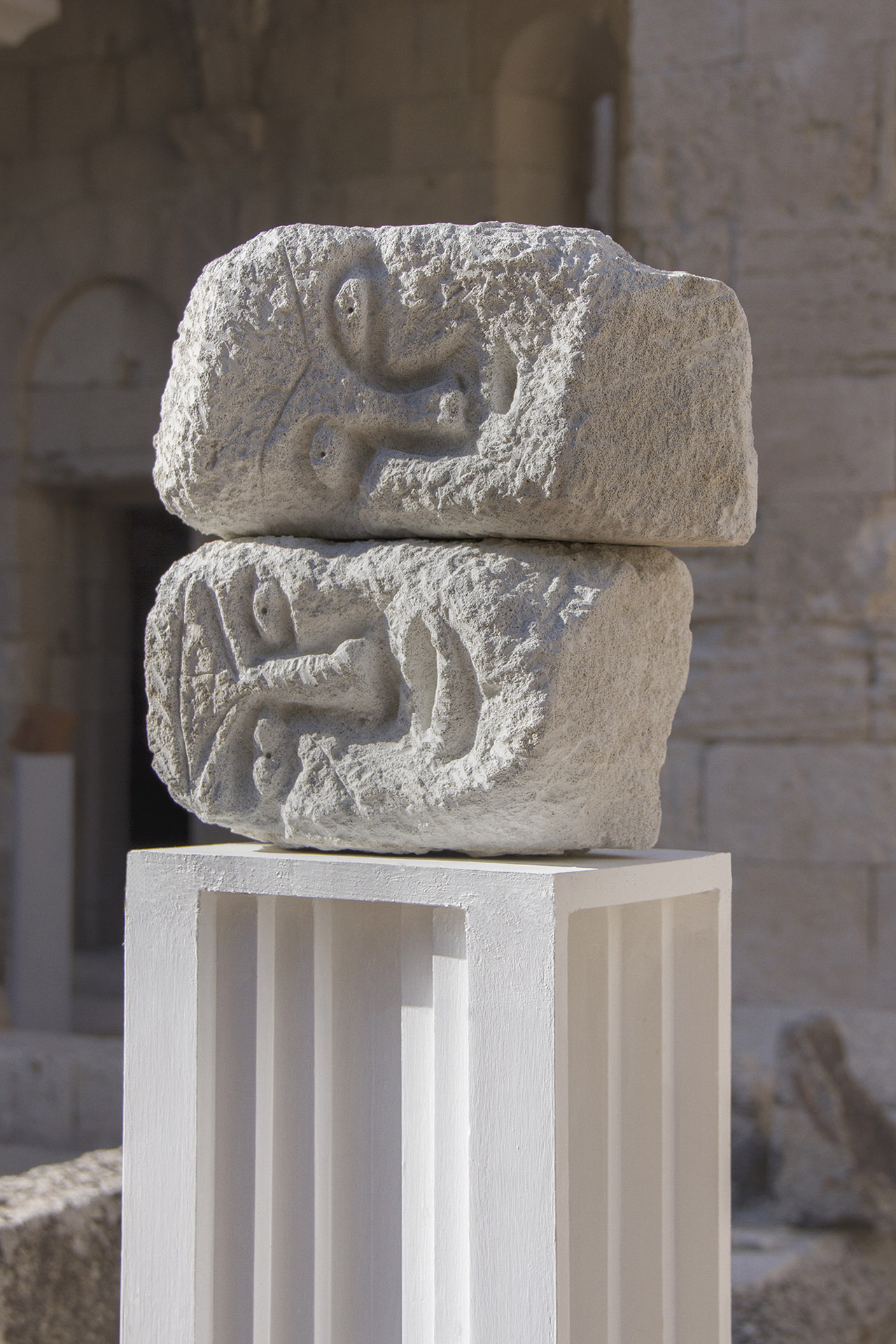
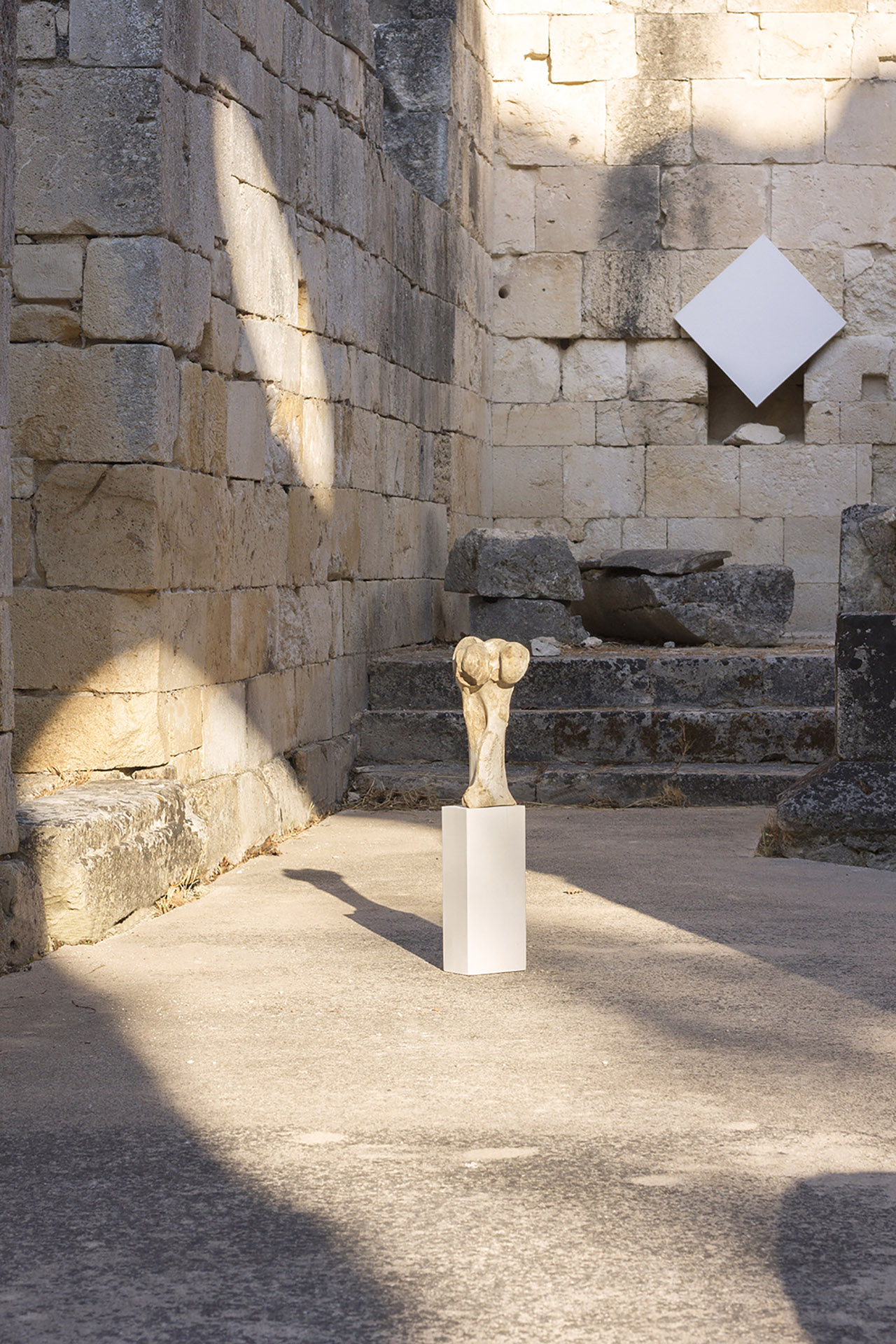
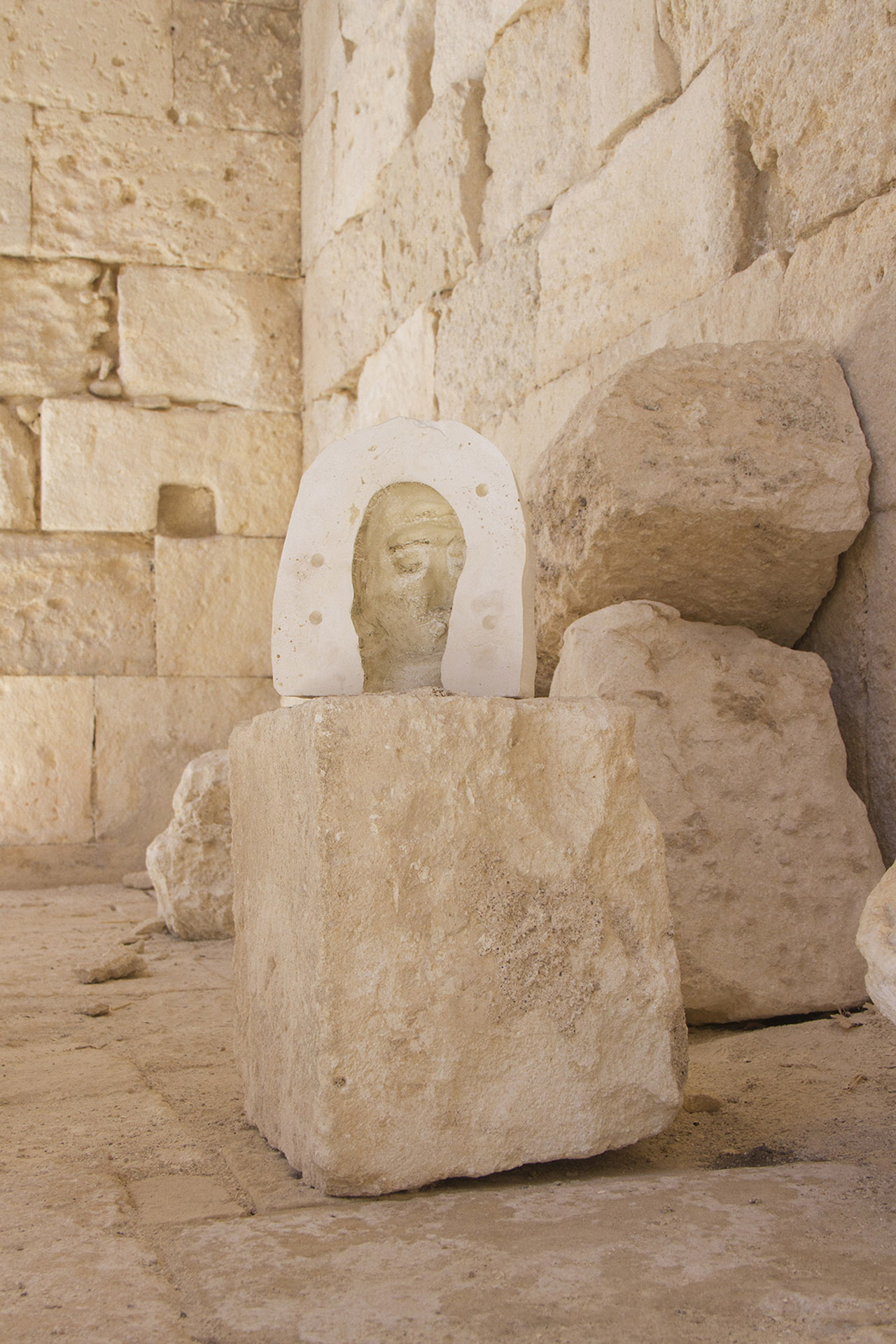
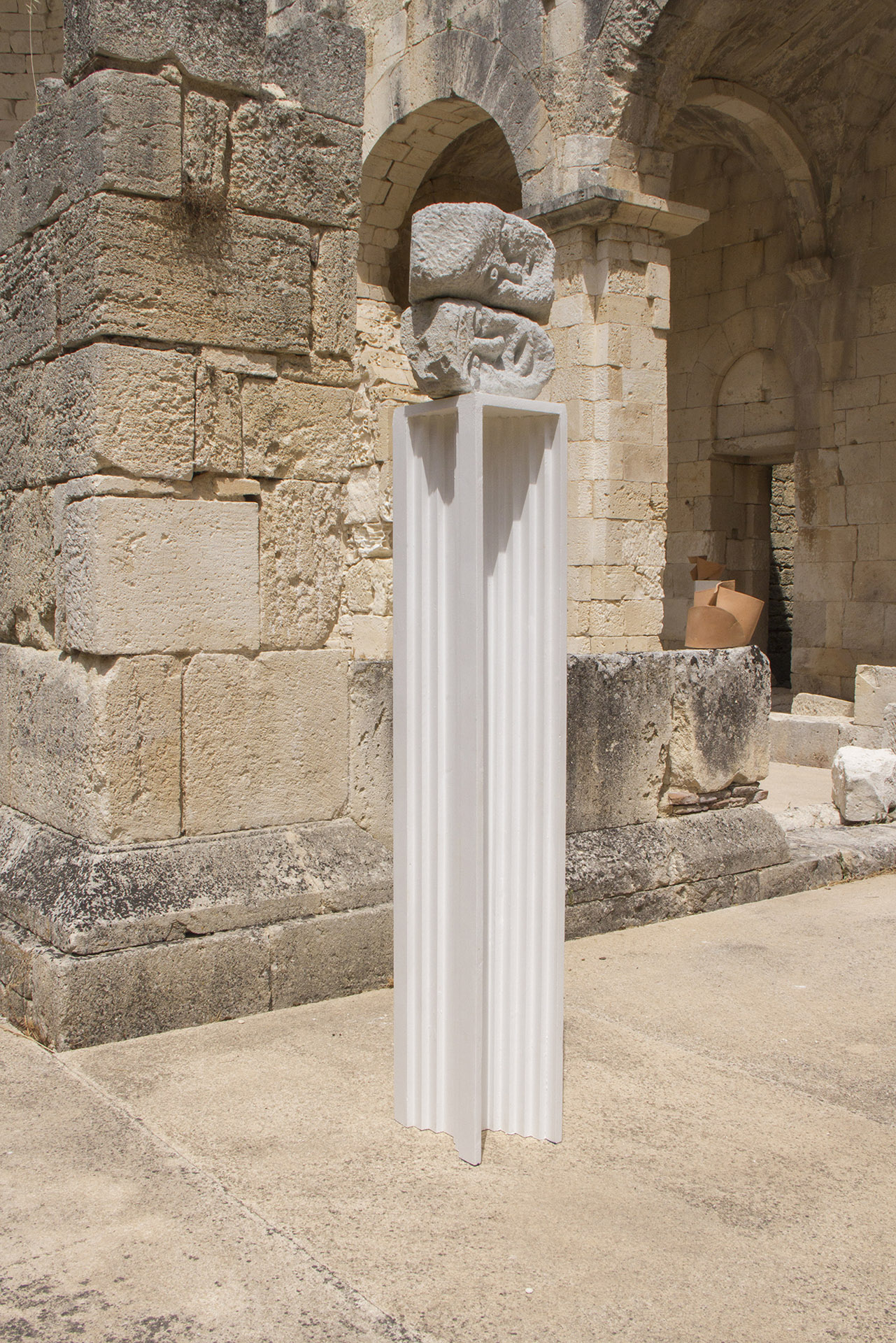
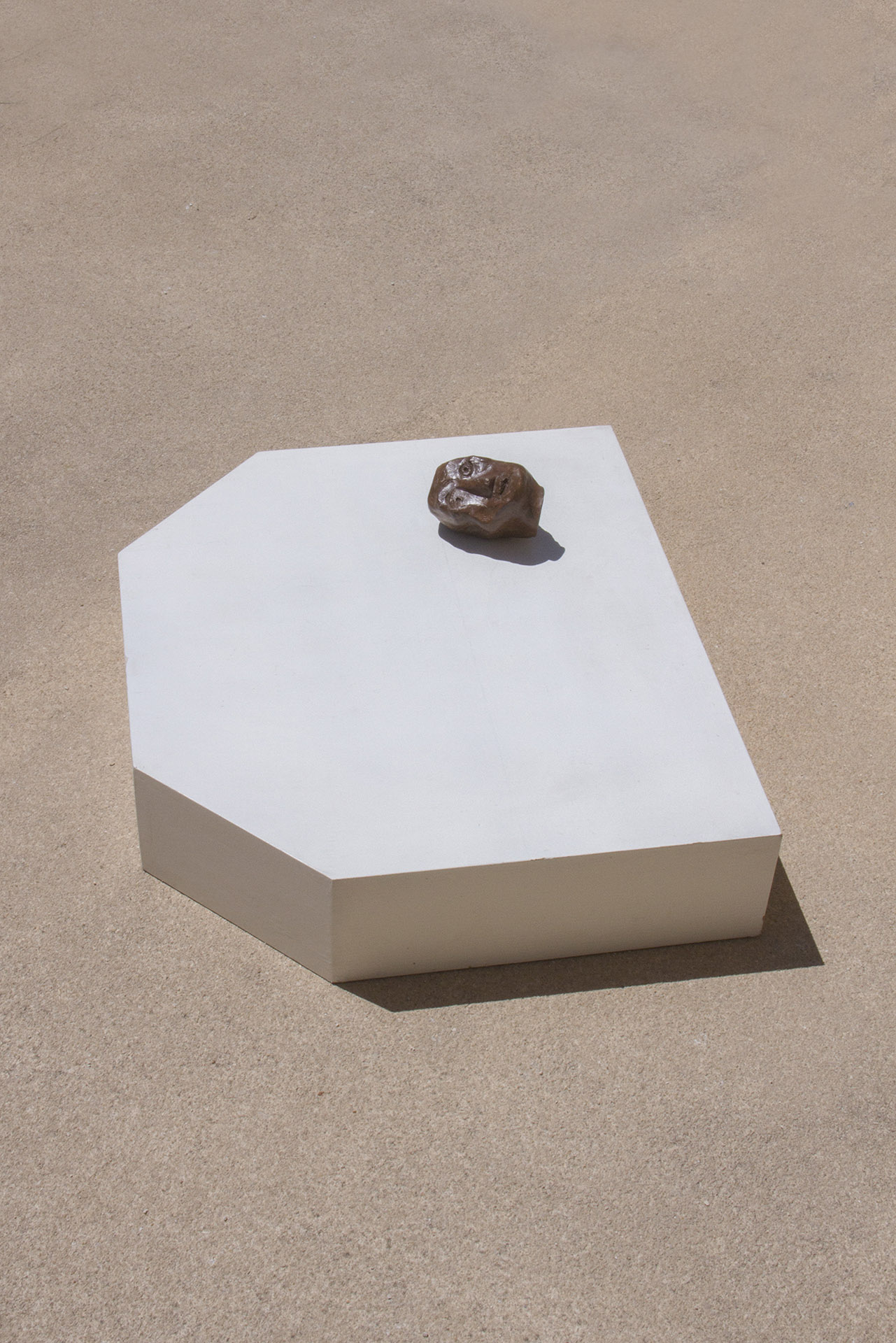
The exhibition of the Nuorese museum provokes a reflection by Montecristo Project from which follows the desire to rethink and evaluate Sardinian contemporary art from a new perspective, proposing a re-edition of the museum project, through a personal historical-artistic reading of the concept of “constance of resistance “. This concept – observes Montecristo Project – can be understood through Nachleben‘s mental representation, or the “surviving” of the image, expressed by Aby Warburg, which in turn refers to Nietzsche’s theory of “eternal return” and Freudian psychology .
According to Warburg, there is a method of preserving images whereby they persist and are transmitted according to logics that differ from that of the history of art: they would in fact be ascribable to a deeper level than the human, namely that of the unconscious. The image is psychic, it is a formation that continually bounces between the mental, internal and indefinite dimension, and the external physical one, crystallized in artistic representations. They survive over time in man’s desire to express himself, original and prior to the concept of art.
Esiste, secondo Warburg, un metodo di conservazione delle immagini per cui esse perdurano e si trasmettono secondo logiche diverse da quella della storia dell’arte: sarebbero infatti ascrivibili ad un livello più profondo dell’umano, ovvero quello dell'inconscio. L’immagine è psichica, è una formazione che rimbalza continuamente tra la dimensione mentale, interna e indefinita, e quella fisica esterna, cristallizzata nelle rappresentazioni artistiche. Sopravvivono nel tempo, “resistono costanti” nel desiderio dell’uomo di esprimersi, originario e precedente al concetto di arte.
On the basis of this interpretation, this research comes to find this eternal character in those forms of human expression, which even before being works of art, are apotropaic, cultural, decorative and ornamental manifestations. Anthropological and popular sculptures that evoke aesthetic forms handed down from Nuragic art, a primitive art form of the Bronze Age where the original seed of Sardinian artistic identity would reside.
These “resisting” works are found in every town in Sardinia. From north to south, each inhabited center has its own author, whose works all have something in common: an anti-classical and protohistoric trait of the image. On the other hand, the artisan production characterized by currents, fashions, trends, which is presented in the form of a kitsch folk figure, remains outside the object of the investigation.
The project takes shape over the years through different channels: exhibition, photographic and editorial. After the publication of the “manifesto” of the constant resistance, Montecristo Project travels a journey through anonymous sculptures, objects and finds from which a photographic dossier and an artifacts collection arise.
Lastly, the project is completed with pieces in ceramic and raw earth, “models of spaces”, a further reference to the archaic modernistic architectural and sculptural form.
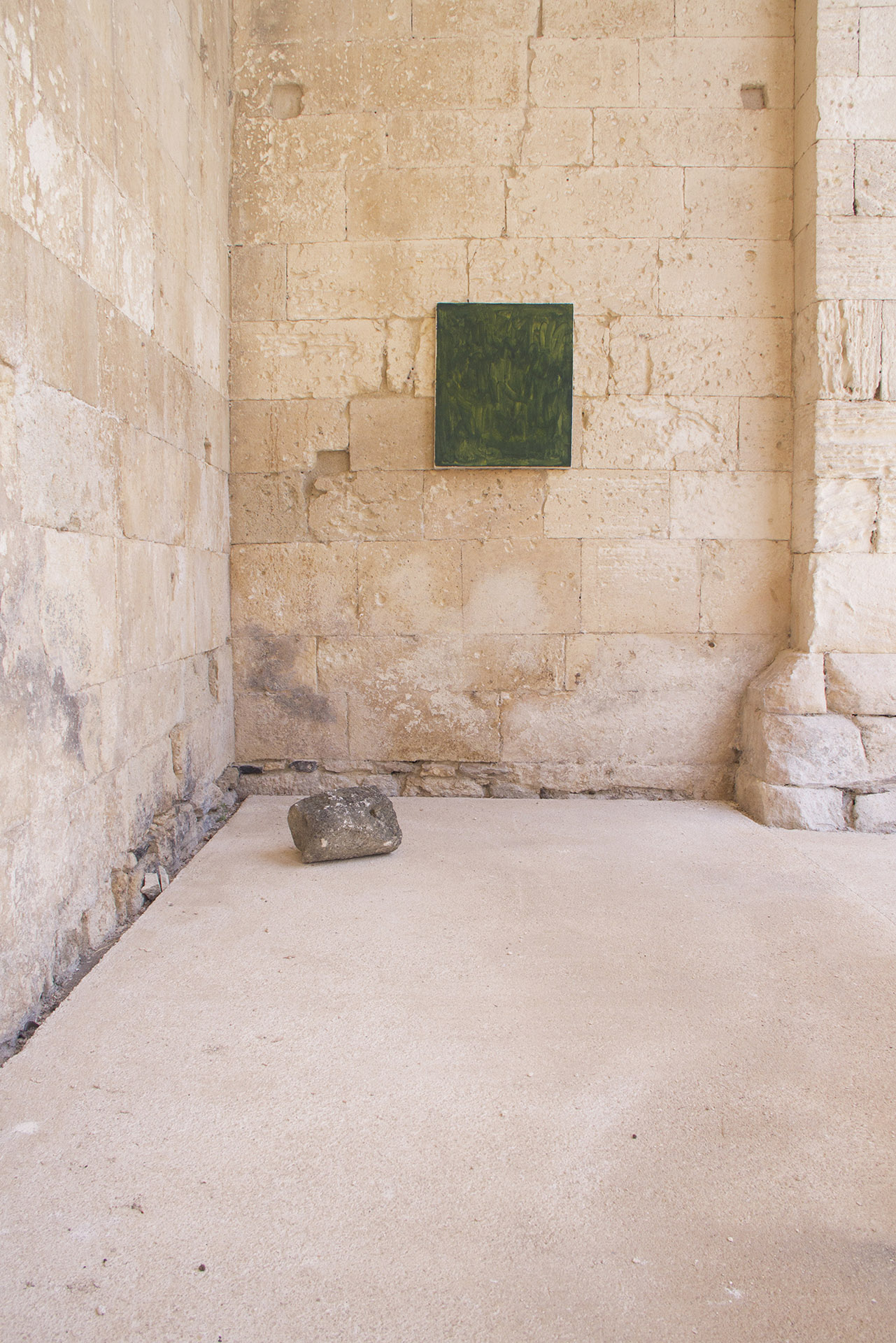


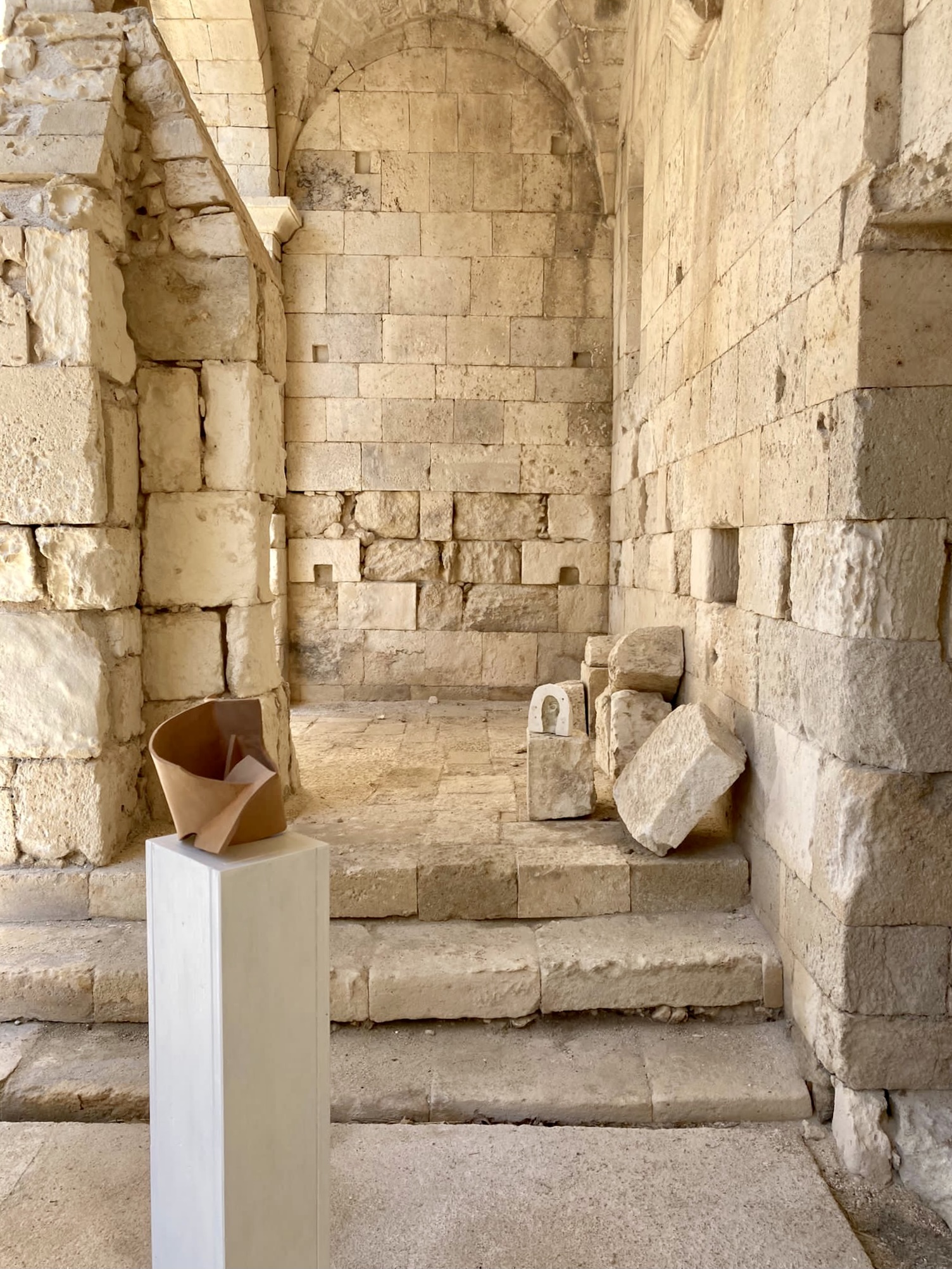
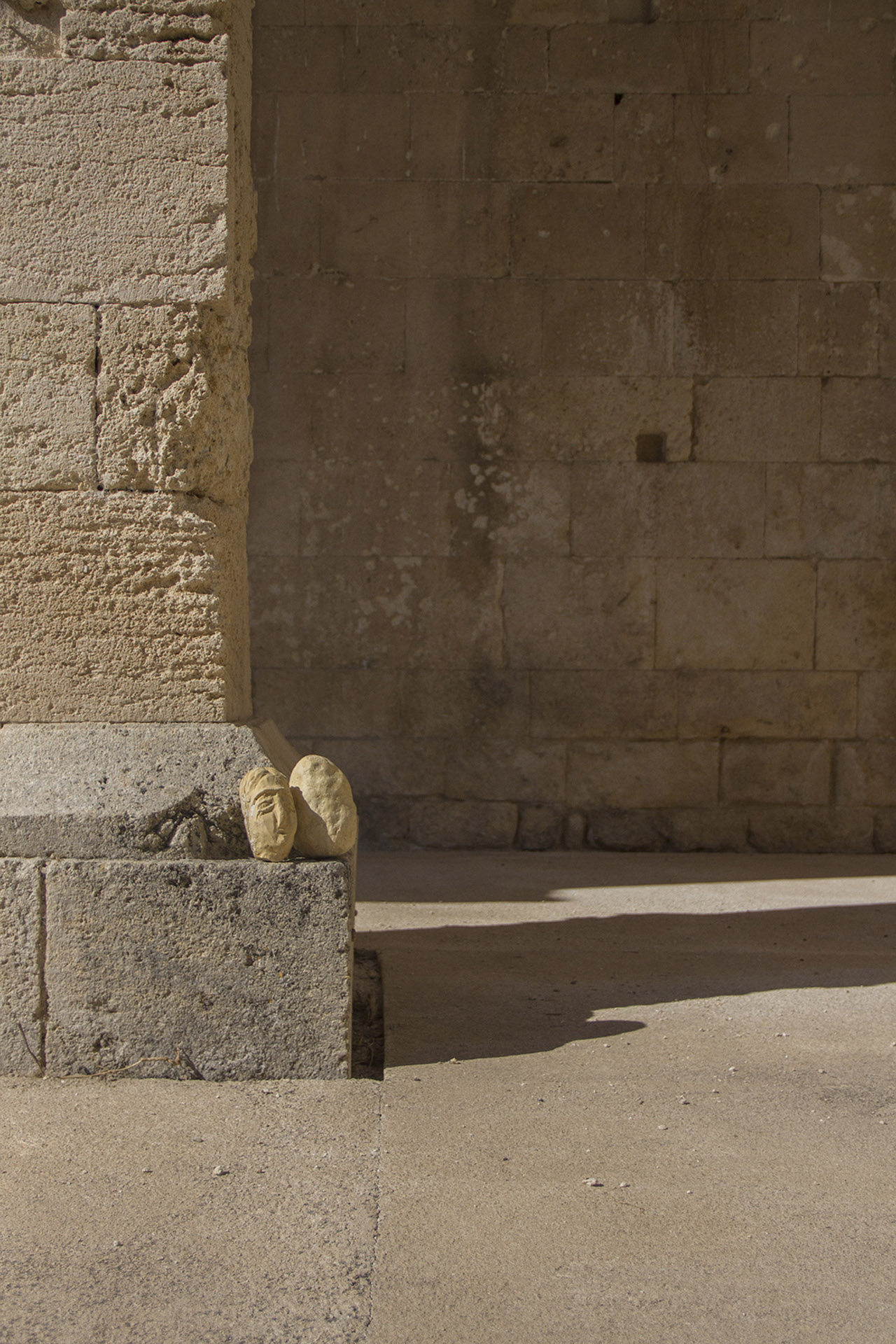
The Enchanted Garden
The reference to the eccentric Parco dei Mostri in Bomarzo (Viterbo), a sixteenth-century work designed by the architect Pirro Ligorio and commissioned by the languid prince Vicino Orsini, as well as the echoes of the installations of the Tarot Garden by Niki de Saint Phalle of the late twentieth century located near of Garavicchio (Capalbio), are almost inevitable.
In Paolino the artistic impulse is overbearing since his young age. Sculptures in wrought iron, solid wood, local stone reveal his stylistic code. Irregular shapes, fantastic and visionary creatures, irreverent portraits and self-portraits (like the sculpture of his own head peeking out from the wall of a house with a sly grimace). Pindaric connections and literary references are clear in his work.
An arcane garden of stone sculptures nestled among the rural tuffs of North Western Sardinia: Discovering the mysterious and forgotten work of the Sedinese artist Paolino Sanna.
The reference to the eccentric Parco dei Mostri in Bomarzo (Viterbo), a sixteenth-century work designed by the architect Pirro Ligorio and commissioned by the languid prince Vicino Orsini, as well as the echoes of the installations of the Tarot Garden by Niki de Saint Phalle of the late twentieth century located near of Garavicchio (Capalbio), are almost inevitable.
What characterizes this single sculptural and landscape expression is however the purely twentieth-century language.
The compact and rough shapes, at the same time sinister and playful, express an indecipherable voice of the subconscious.
Paolino Sanna was born in Sedini in 1927. Three years earlier the manifesto of the artistic movement of Surrealism was drawn up in Paris. He grows up in a house full of books that belonged to his uncle, a professor. He nourishes his personal imagination with references to sacred and contemporary art. He spends his entire existence working the material, practicing the profession of blacksmith and craftsman.
In Paolino the artistic impulse is overbearing since his young age. Sculptures in wrought iron, solid wood, local stone reveal his stylistic code. Irregular shapes, fantastic and visionary creatures, irreverent portraits and self-portraits (like the sculpture of his own head peeking out from the wall of a house with a sly grimace). Pindaric connections and literary references are clear in his work.
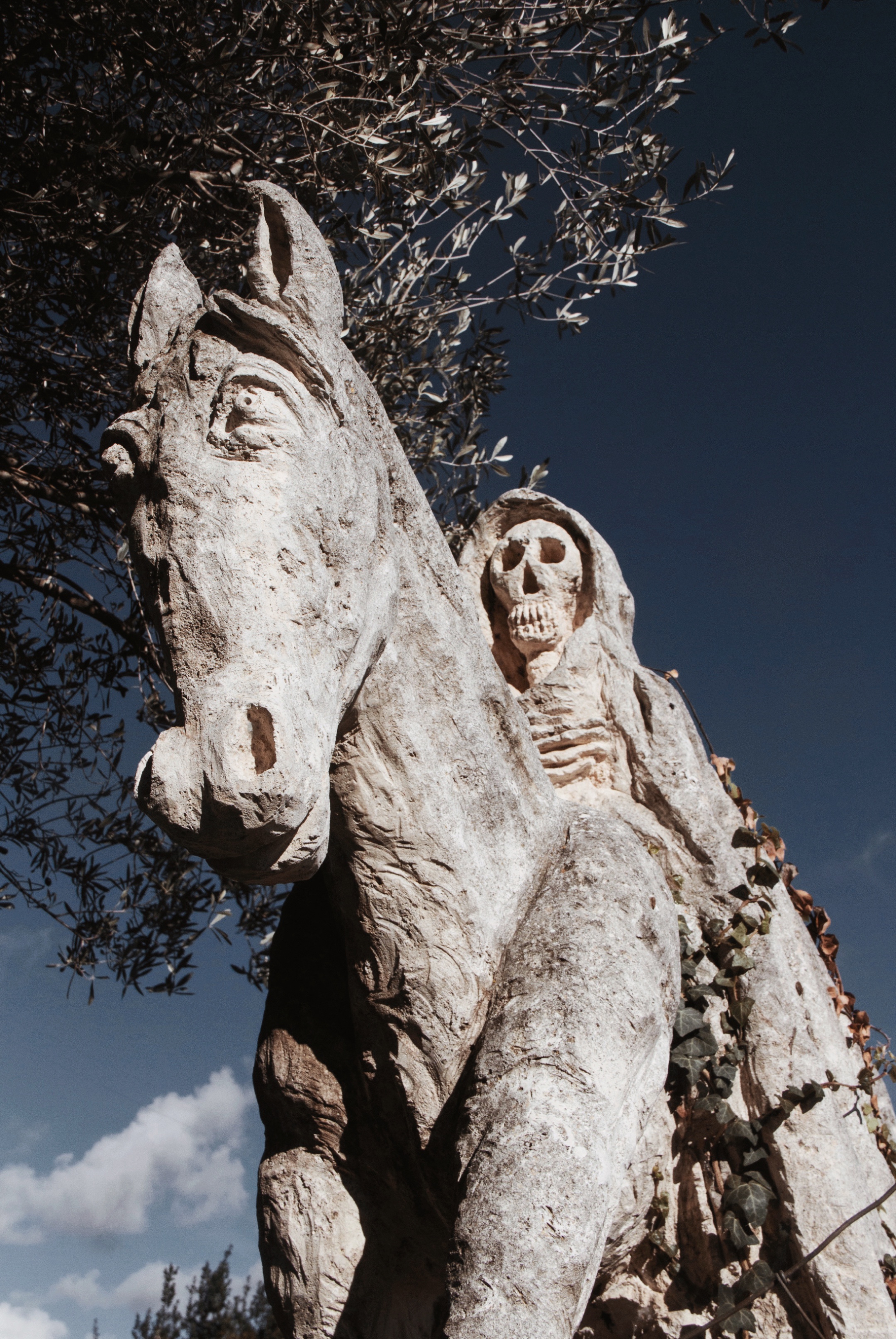
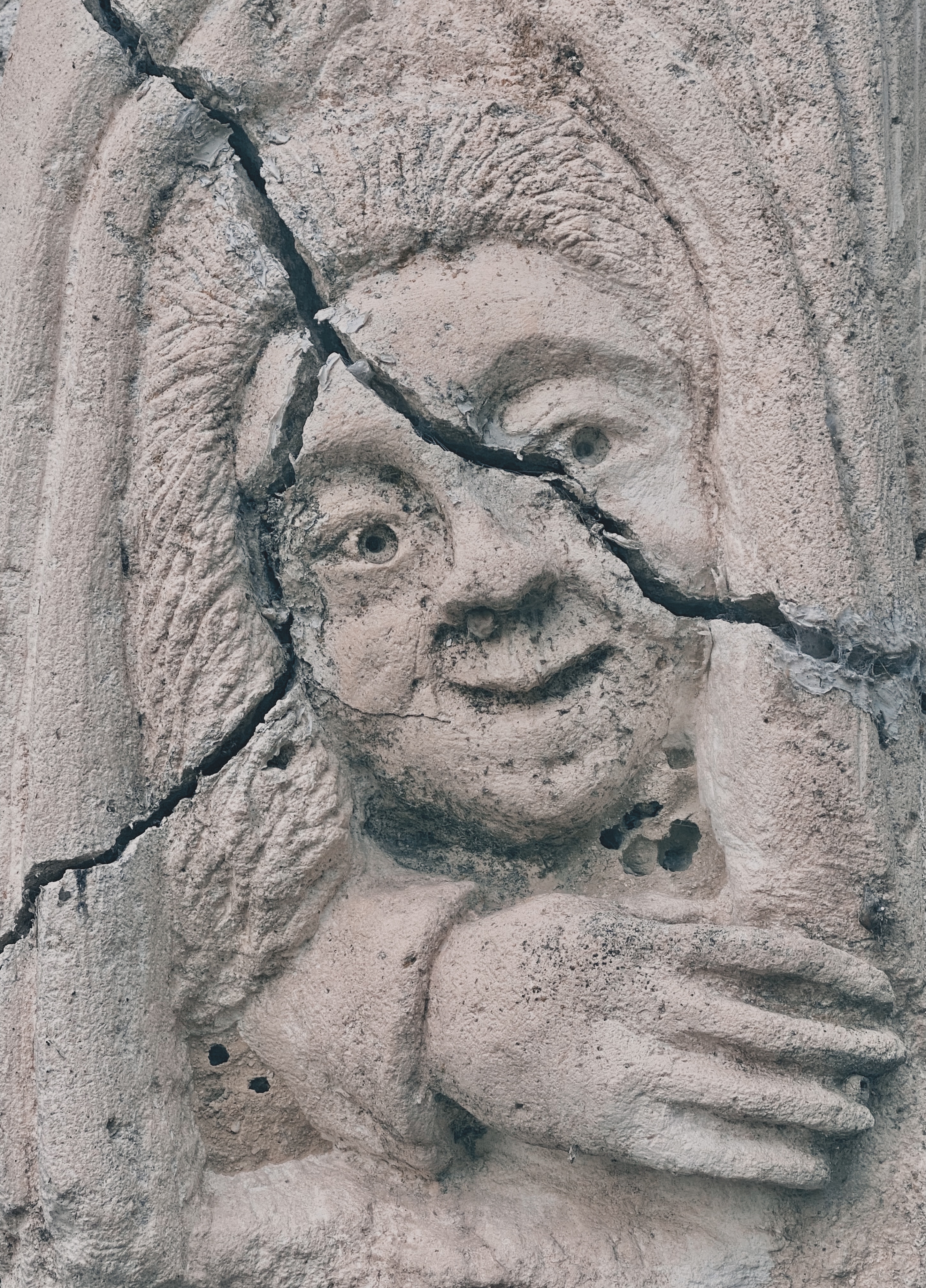
In the specific case of his most important work, Il Giardino Incantato (The Enchanted Garden), located just outside the town, he uses the Sedinese countryside as a living and active part of his installation. He plans a real immersion of the visitor who becomes himself part of his personal story, whose ending is open.
He shapes the garden with the intention of creating a theme park populated with strange creatures, finally freed from the stone and revealed to the eyes by his chisel. The sequences are full of symbolism and dreamlike scenes. A fixed presence: the effigy of the artist who portrays himself in the midst of monkeys, panthers, religious icons, maternal and primordial images.
He repeatedly appears as if in a strange dream, in an attempt to send surreal stone messages to the viewer. Among all the sculptures, a dark and deeply enigmatic image of Death on Horseback stands out, which over the decades has made it appear even more romantic due to the enveloping and infesting presence of English ivy (Hedera Helix).
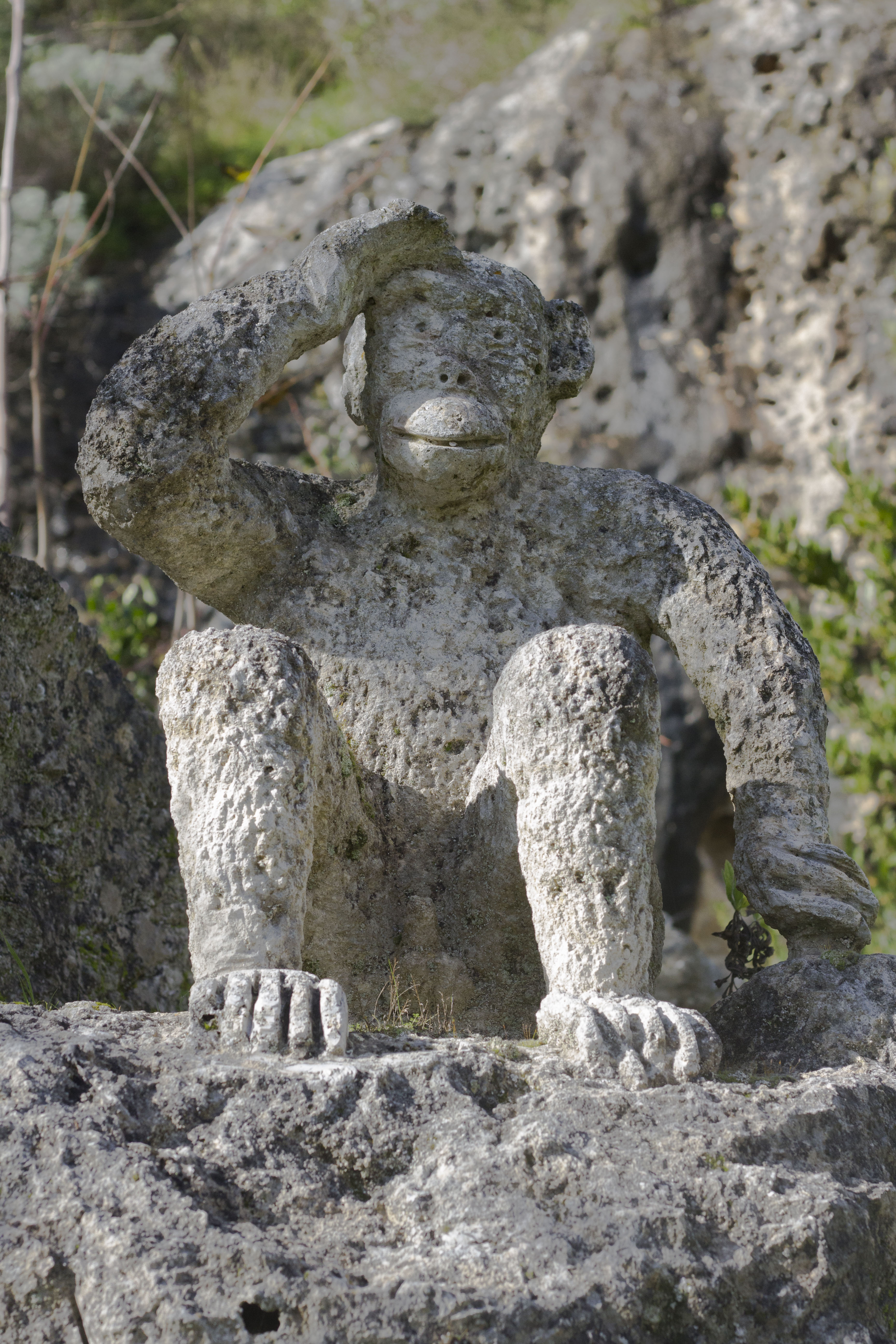



The representations are enfranchised from any aesthetic prejudice or conventional composition. On the contrary, with the element of surprise and nonsense, so lacking in apparent coherence, they induce the observer's journey into a parallel dimension, made up of almost lysergic and Dantesque images.
The dialogue with the landscape is total and perpetually present in the elements used (tuff and local limestone), but at the same time the garden leads far away, into a fantastic, imaginary and unreal world that becomes an expression of a wide range of feelings and inner torments of the human abyss.
Some important pre-existing buildings, such as the church of San Nicola di Silanis dating back to the twelfth century and the necropolis known as Domus de Janas from the third millennium BC, not far from the garden, make this place even more unique, precious and timeless.
Paolino Sanna's production is part of the ensemble of artists studied by Montecristo Project during their research La Costante resistenziale

